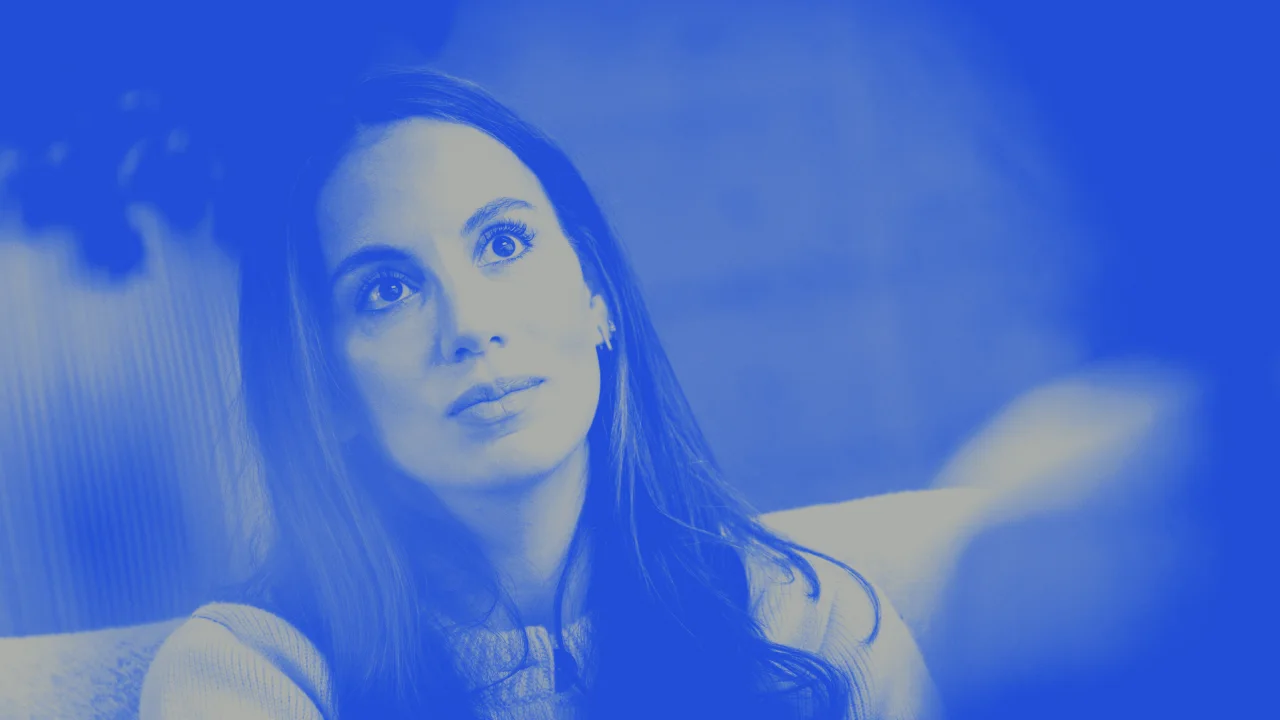OpenAI brain drain: What to make of CTO Mira Murati’s sudden exit
Welcome to AI Decoded, Fast Company’s weekly newsletter that breaks down the most important news in the world of AI. You can sign up to receive this newsletter every week here. OpenAI CTO Murati departs as company is set to abandon its nonprofit roots It was just last year that Fast Company featured OpenAI CTO Mira Murati on the cover of its magazine. Inside was a revealing exposé, where Murati talked about her part in building game-changing products like ChatGPT. Later that year Murati would briefly become CEO of OpenAI, when Sam Altman was forced out of the role. (He quickly reassumed the title.) Now Murati is gone, the latest in a string of executive departures at the hottest and best-funded AI startup in the world. Murati announced her departure on Thursday with a thankful and diplomatic letter to her coworkers, but left no hint as to her reasons for leaving. She did, however, mention that her exit comes just after the company passed an important milestone: “Our recent releases of speech-to-speech and OpenAl o1 mark the beginning of a new era in interaction and intelligence—achievements made possible by your ingenuity and craftsmanship,” she wrote. Nobody knows what Murati will do next, but she certainly has the name recognition and résumé to attract large sums of money from venture capitalists, should she have the desire to start something new. Murati is the latest in a string of executive departures over the past year from OpenAI. One of the company’s cofounders, John Schulman, who led OpenAI’s alignment sciences team, departed in August to join Anthropic. Cofounder Andrej Karpathy left (again) in February. Another cofounder, the company’s research mastermind and spiritual leader Ilya Sutskever, left in May after losing a boardroom fight with CEO Sam Altman and a group of investors last year. Safety chief Jan Leike also left in May. Cofounder Greg Brockman left in August to go on an extended leave through the end of this year to “relax and recharge.” Other departures this year include William Saunders, who managed the “superalignment group”; fellow superalignment teammates Leopold Aschenbrenner and Pavel Izmailov; and safety team member Daniel Kokotajlo (who said nearly half the so-called artificial general intelligence safety team had departed by August 2024). Sources close to OpenAI tell me that some people within the company worry that OpenAI has become too focused on pushing new and profitable AI products out into the world, and not focused enough on safeguarding it from doing harm. This focus on profit never fit with the company’s current nonprofit status. Now, just hours after news of Murati’s departure, The Wall Street Journal reported that OpenAI will change itself from a nonprofit to a for-profit company, and that Altman will own a financial stake in the company for the first time. Google paid megabucks to get back AI pioneer Noam Shazeer An AI company’s most important asset is its research talent: very smart mathematicians who know how to build, train, and improve large language models. And we’re seeing big tech companies strike licensing agreements with smaller startups for the underlying purpose of poaching one of those elite researchers. In August, news broke that Google had welcomed AI researchers Noam Shazeer and Daniel De Freitas back into the fold. The two had left Google in 2021 to found Character.AI, but had run into trouble monetizing the company, whose app offers AI personas that users can talk to. Now, The Wall Street Journal reports, key details have emerged around the return of Shazeer and De Freitas, namely that Google paid $2.7 billion to license Character.AI’s software, but its real aim was very likely to recruit Shazeer. Shazeer is an AI pioneer. He worked at Google until 2021, and during his time there he was one of the authors of the seminal 2017 “Attention is All You Need” paper, which proposed the Transformer model architecture that set off the current generative AI craze and powers most of the language models we use today. Now Shazeer is back at Google with a VP title. He’s one of three people guiding the development and application of the company’s Gemini model, the Journal reports. For $2.7 billion, Google also got De Freitas and around 30 other Character.AI employees. In March Microsoft did something similar to recruit Google DeepMind cofounder Mustafa Suleyman to lead its consumer AI division. It paid $653 million in a licensing deal with Suleyman’s startup, Inflection AI, for which it got Suleyman and most of Inflection’s employees, along with the right to sell access to the Inflection AI model through its Azure cloud. Why don’t these big tech companies get the researchers they want by buying the smaller AI companies outright? Because that has a look of anticompetitive consolidation in the AI industry, and could draw a suit from the Federal Trade Commission. Meta announces new Llamas that can see, new AI gl

Welcome to AI Decoded, Fast Company’s weekly newsletter that breaks down the most important news in the world of AI. You can sign up to receive this newsletter every week here.
OpenAI CTO Murati departs as company is set to abandon its nonprofit roots
It was just last year that Fast Company featured OpenAI CTO Mira Murati on the cover of its magazine. Inside was a revealing exposé, where Murati talked about her part in building game-changing products like ChatGPT. Later that year Murati would briefly become CEO of OpenAI, when Sam Altman was forced out of the role. (He quickly reassumed the title.) Now Murati is gone, the latest in a string of executive departures at the hottest and best-funded AI startup in the world.
Murati announced her departure on Thursday with a thankful and diplomatic letter to her coworkers, but left no hint as to her reasons for leaving. She did, however, mention that her exit comes just after the company passed an important milestone: “Our recent releases of speech-to-speech and OpenAl o1 mark the beginning of a new era in interaction and intelligence—achievements made possible by your ingenuity and craftsmanship,” she wrote.
Nobody knows what Murati will do next, but she certainly has the name recognition and résumé to attract large sums of money from venture capitalists, should she have the desire to start something new.
Murati is the latest in a string of executive departures over the past year from OpenAI. One of the company’s cofounders, John Schulman, who led OpenAI’s alignment sciences team, departed in August to join Anthropic. Cofounder Andrej Karpathy left (again) in February. Another cofounder, the company’s research mastermind and spiritual leader Ilya Sutskever, left in May after losing a boardroom fight with CEO Sam Altman and a group of investors last year. Safety chief Jan Leike also left in May. Cofounder Greg Brockman left in August to go on an extended leave through the end of this year to “relax and recharge.”
Other departures this year include William Saunders, who managed the “superalignment group”; fellow superalignment teammates Leopold Aschenbrenner and Pavel Izmailov; and safety team member Daniel Kokotajlo (who said nearly half the so-called artificial general intelligence safety team had departed by August 2024).
Sources close to OpenAI tell me that some people within the company worry that OpenAI has become too focused on pushing new and profitable AI products out into the world, and not focused enough on safeguarding it from doing harm. This focus on profit never fit with the company’s current nonprofit status. Now, just hours after news of Murati’s departure, The Wall Street Journal reported that OpenAI will change itself from a nonprofit to a for-profit company, and that Altman will own a financial stake in the company for the first time.
Google paid megabucks to get back AI pioneer Noam Shazeer
An AI company’s most important asset is its research talent: very smart mathematicians who know how to build, train, and improve large language models. And we’re seeing big tech companies strike licensing agreements with smaller startups for the underlying purpose of poaching one of those elite researchers.
In August, news broke that Google had welcomed AI researchers Noam Shazeer and Daniel De Freitas back into the fold. The two had left Google in 2021 to found Character.AI, but had run into trouble monetizing the company, whose app offers AI personas that users can talk to. Now, The Wall Street Journal reports, key details have emerged around the return of Shazeer and De Freitas, namely that Google paid $2.7 billion to license Character.AI’s software, but its real aim was very likely to recruit Shazeer.
Shazeer is an AI pioneer. He worked at Google until 2021, and during his time there he was one of the authors of the seminal 2017 “Attention is All You Need” paper, which proposed the Transformer model architecture that set off the current generative AI craze and powers most of the language models we use today.
Now Shazeer is back at Google with a VP title. He’s one of three people guiding the development and application of the company’s Gemini model, the Journal reports. For $2.7 billion, Google also got De Freitas and around 30 other Character.AI employees.
In March Microsoft did something similar to recruit Google DeepMind cofounder Mustafa Suleyman to lead its consumer AI division. It paid $653 million in a licensing deal with Suleyman’s startup, Inflection AI, for which it got Suleyman and most of Inflection’s employees, along with the right to sell access to the Inflection AI model through its Azure cloud.
Why don’t these big tech companies get the researchers they want by buying the smaller AI companies outright? Because that has a look of anticompetitive consolidation in the AI industry, and could draw a suit from the Federal Trade Commission.
Meta announces new Llamas that can see, new AI glasses tricks
At its Meta Connect developers event Wednesday, Meta announced a new generation of Llama AI models and some cool AI advancements in its AR glasses.
Meta debuted a couple of new Llama 3.2 models—one with a billion parameters and the other with 90 billion. Earlier Llama models could only process text, but the new 3.2 models can process images too.
Meta is also releasing a pair of smaller models (one is a million parameters and the other is three million) that can run on mobile devices. The models can run on Qualcomm and MediaTek hardware, and are optimized for ARM processors, Meta says, and can be downloaded at llama.com and Hugging Face. They’re also available on a large number of cloud platforms, including AWS, Google Cloud, and Databricks.
Meta announced some AI-related improvements to its Ray-Ban Meta smart glasses. The glasses can now remind the user of things they see that they need to remember, like the almost-empty carton of milk in the fridge. They can scan QR codes or phone numbers.
Meta said it’ll soon be adding video to Meta AI, so the glasses will be able to see what the wearer sees in real time. That will let the AI assist the user when they’re doing things like exploring a city or preparing a meal. ideo capability is coming later this year.
The best thing Meta unveiled was a new, working prototype of its Orion augmented reality glasses, which can display data and entertainment in the lenses, label things the user sees in the world, and even create life-size holograms of people.
More AI coverage from Fast Company:
- The problem with Sam Altman’s vision for a ‘shared prosperity’ from AI
- California’s controversial AI bill’s fate will be decided this week
- Here’s what happens when humans and AI dance together
- After helping pro athletes hone their game, Uplift Labs launches an app for everyday gymgoers
Want exclusive reporting and trend analysis on technology, business innovation, future of work, and design? Sign up for Fast Company Premium.






















